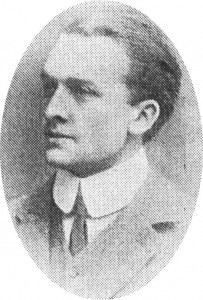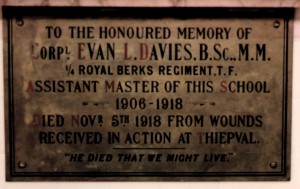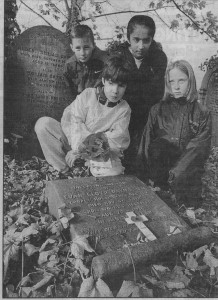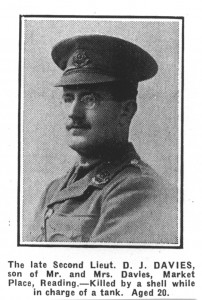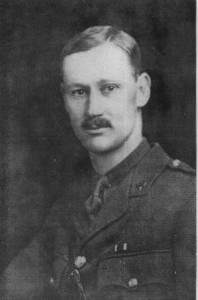Charles Frederick Denman Cook D.S.O.
Lieutenant Colonel 1st Battalion Wellington Regiment.
New Zealand Expeditionary Force
Division 67
Extension
Charles Frederick Denman Cook was the son of Professor C.H.H. Cook MA of Christchurch New Zealand (one time Fellow of St. Johns College Cambridge) and nephew of T.J. Peacock, “Calderwood”, Caversham. Born in 1883, Charles was an Master of Art with First Class in Classics with Honours, and LL.B. His mother was Mrs E.D. Cook of Marton, Marton was Charles last address.
Initially a member of the New Zealand Territorial force he joined the New Zealand Expeditionary Force in August 1914 with the rank of Captain. As part of the ‘Main Body’, that is the first contingent of men who were to serve with the New Zealand Expeditionary Force, he reached Egypt on 3rd December 1914. He saw active service in Egypt, Gallipoli and France.
Whilst still a Major, Charles Cook was mentioned in dispatches in February 1916 (research from Phil Lascelles states London Gazette 28th January page1207) the citation states ‘in connection with operations described in General L. Hamiltion’s despatch dated 11th December 1915’; and again in March 1917 London Gazette 1st June 1917 p5429, Record 683 ‘For continuous devotion to duty and gallantry in the Field. He has been on active service since the outbreak of war, filling many positions of importance including temporary Command of a Battalion, he has constantly discharged his duties in a most conscientious and efficient manner. He has taken part in practically all the operations in which the Division has been engaged, in Gallipoli and in France, and in action has always displayed keen judgement and the utmost coolness and bravery, especially during the period 21st September 1916 to 26th February 1917.’ Subsequently he was invested by the King with the DSO – Distinguished Service Order. The citation was for ‘distinguished service in the field’. London Gazette 4th June 1917. Cook became a Lieutenant Colonel on 15th March 1915
On 21st November 1917 Charles F. D. Cook married Miss Agneta Mary Haynes of 11. Victoria Square, Reading.
Miss Haynes had been on the staff of St. Luke’s V.A.D. hospital for some time, and “ the liveliest interest was aroused in the wedding by the staff and patients, the latter forming a guard of honour at the church, whilst members of staff were presented at the ceremony. Wounded Soldiers formed an arch of crutches at a wedding. There was a very large number of the general public, and the approaches to the church were thronged…….The patients at St Luke’s Hospital presented Miss Haynes with a New Zealand badge made into a sofa cushion cover, and the staff’s gift consisted of silver tea knives. In the evening the patients had a whist drive with refreshments and wedding cake in honour of the event”. (Reading Standard 24th November 1917)
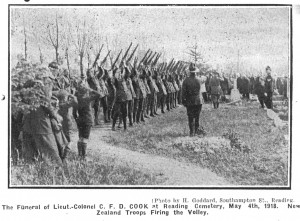 |
Lieut.-Col C.F.D. Cook died on May 2nd 1918 of cerebro-spinal meningitis, contracted on active service, at Neatley Hospital, Portsmouth. He was buried on May 4th and was given an impressive military funeral. His is a registered war grave, number16436. The Memorial was erected by men of his unit. His wife Agneta is buried with him as is his brother whom Agneta later married.
The grave also states “ IN LOVING MEMORY OF MY DEAR BROTHER LIEUTENANT IN THE 8TH BATTALION ROYAL BERKSHIRE REGIMENT”. This refers to the brother of Agneta, WILLIAM GRAY HAYNES who died on Saturday, 25th September 1915. Age 24. He is buried at
BOIS-CARRE MILITARY CEMETERY, HAISNES, Pas de Calais, France. Location A. 19.
